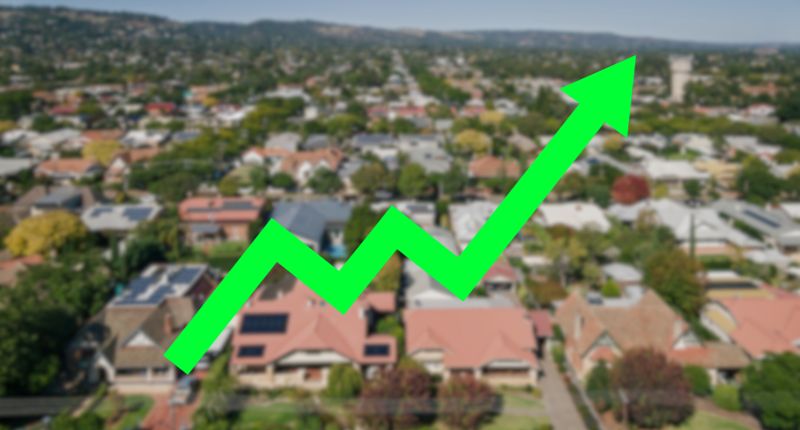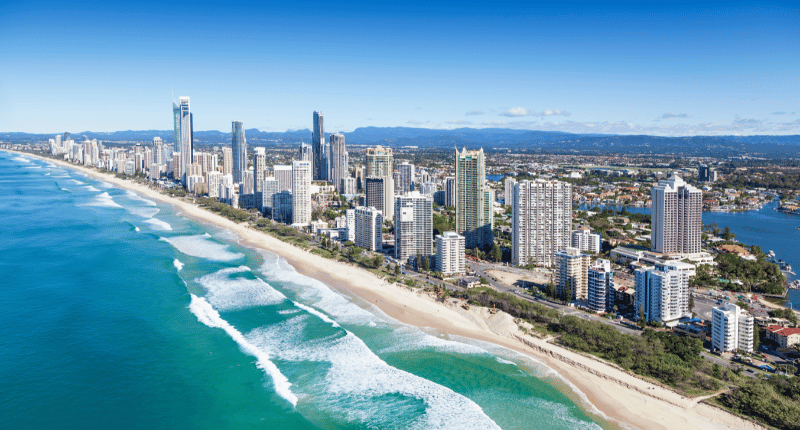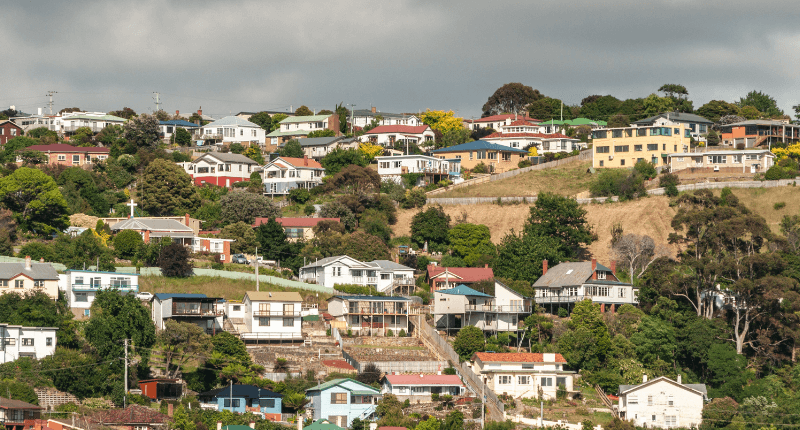- Property prices rose 0.8% in September.
- The rise across the capitals since January is 7.4%
- Regional growth was more subdued.
Australian house prices have risen again, according to the latest CoreLogic Home Value Index (HVI).
The nation recorded a 0.8% uptick in home values across September, marking the eighth consecutive month of growth. The pace also rose from August, when home value rises came in at 0.7% (revised down from 0.8%); this took the quarterly pace of growth in Australian home prices to 2.2%.
While Australian dwelling prices rose for the quarter, it represents an easing from the 3.0% gain recorded in the June quarter. It was noted the easing prices reflected the rises in advertised stock levels.
The premium end of the capital city market has led the slowdown. While the upper quartile also led the recovery, quarterly growth eased back to 2.3%; the lower quartile growth rate accelerated to 3.2%.
A growing number of SA4 regions are also approaching new record highs, with 27 out of 87 regions across the country already back at record levels, with a further 16 a mere 2% away from record highs.
Home prices on track for new record in November
Australian home prices have recovered by 6.6% from the trough observed as the year began, according to CoreLogic. However, prices remained 1.3% below the record high of April 2022.
Given current growth rates, CoreLogic research director, Tim Lawless said a new nominal high is likely to be reached by the end of November.
“We have already seen dwelling values reach new record highs in Perth and Adelaide. Brisbane looks set to reach a new record high in October, with home values currently only 0.6% below their previous peak.”
Tim Lawless, CoreLogic
“Hobart and Canberra have the furthest to go before staging a nominal recovery, with dwelling values remaining 12.4% and 7.0% below their cyclical highs from last year.”
While the national figures are up 6.6% from the start of the year, the combined capital cities recorded a 7.4% rise over the first nine months of the year and regional values have risen 2.6%.
Regional value growth weaker than capitals
Weaker growth continued to be recorded across the regions, with all ‘rest of state’ regions seeing subdued growth conditions when compared to the capital city counterpart over the September quarter.
Broadly, the combined regions recorded a 1.1% rise in home prices during the September quarter, coming in at less than half the combined capital city gain of 2.5%.
“Softer housing conditions across regional Australia looks to be more demand-driven, with the estimated number of home sales 6.5% lower than a year ago and 9.2% lower relative to the previous five year average,” said Lawless.
“In contrast, the estimated volume of home sales across the combined capital cities was 1.9% higher than a year ago and 6.3% above the five-year average.”
Though the regions recorded subdued growth, CoreLogic found that most regional markets were seeing some upward pressure on values due to the relatively low advertised supply levels.
The exceptions were regional Victoria and regional Tasmania, where advertised supply is above average and housing values trended lower over the quarter.
Change in dwelling values for Australian property prices
| Month | Quarter | Annual | Total return | Median value | |
| Sydney | 1.0% | 2.5% | 7.3% | 10.4% | $1,110,660 |
| Melbourne | 0.4% | 1.3% | 1.5% | 4.7% | $776,716 |
| Brisbane | 1.3% | 3.9% | 5.0% | 9.5% | $761,739 |
| Adelaide | 1.7% | 4.3% | 5.0% | 9.0% | $691,591 |
| Perth | 1.3% | 3.6% | 8.8% | 13.9% | $618,363 |
| Hobart | -0.6% | -0.2% | -7.0% | -3.0% | $658,994 |
| Darwin | 0.1% | 1.3% | -2.2% | 3.8% | $493,362 |
| Canberra | 0.2% | 0.4% | -3.0% | 0.9% | $836,327 |
| Combined capitals | 0.9% | 2.5% | 5.1% | 8.7% | $814,204 |
| Combined regional | 0.4% | 1.1% | 0.4% | 4.9% | $591,632 |
| National | 0.8% | 2.2% | 3.9% | 7.8% | $740,668 |
Index results as at 30 September 2023. Source: CoreLogic.
New and total listings rise, but barriers to buying remain in place
Australia’s property market performance reflected the continuing and severe supply shortage, said Lawless.
“The three capitals recording the highest capital gain each have advertised supply levels that are around 40% below their previous five-year average. Advertised supply levels across Hobart, where values are still trending lower, have been holding at above average levels since June last year and were almost 40% above its five-year average.”
Overall, the rate of new listings has improved over the colder months, bucking the usual trend for winter. More recently, new listings across the capitals were 14% higher than the same time last year, for the four weeks ending 24 September, and listings were 8% above the previous five year average.
The uplift in new listings has now been accompanied by a rise in total listings. While total listings for the capitals remained below last year’s figures and the five year average, Lawless observed a clear upswing in available supply; the rolling four week count of total listings is up 6.7% from the low point in early July.
“More listings imply more choice for buyers, and more choice means less urgency, more time to deliberate on the purchase and negotiate with the vendor,” said Lawless.
The story was not consistent across the nation. Hobart, Canberra, and Melbourne all saw an average number of homes on the market, while Perth sat at the extreme end, with total advertised supply a significant 43.8% below the previous five-year average for this time of the year.
A second factor driving the higher total number of listed properties includes the slower rate of absorption. Lawless attributed the reduced buyer activity to several factors.
“Housing affordability is still relatively stretched and is getting worse as home values continue to rise. High interest rates make it harder to qualify for credit, especially when considered alongside high cost of living pressures and the three percentage point serviceability buffer. Persistently low consumer sentiment is another factor dampening housing sector activity,” he said.
While those barriers remain firmly in place, the report noted that the uplift in stock is unlikely to see a similar uplift in purchasing activity.








